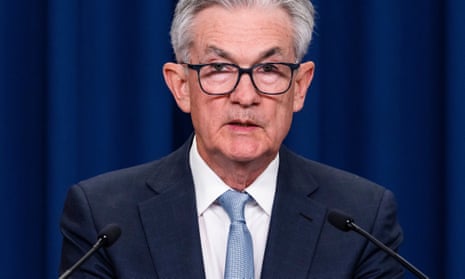Federal Reserve chairman Jerome Powell recently made it clear that the Federal Reserve’s remedies to combat runaway inflation “will cause some pain”. Powell’s words of caution – references to the unemployment and scarcity that will follow increased interest rates – were echoed elsewhere by prominent economists. Some used Powell’s same euphemism: there will be pain.
While the narratives from Powell and others imply that our shared short-term sacrifice will produce shared long-term gains, their careful framing is intended to mask a deeply unpleasant reality: neither the sacrifice nor the gains are shared. Easing inflation will disproportionately harm working-class people, and these same people will reap none of the benefits down the road.
The Fed’s recipe to bring prices under control will increase the cost of borrowing money, which is good news for creditors, while heavily indebted households that rely on loans for their daily survival will face higher bills.
The cost of borrowing will also increase government expenses for public works and social services, forcing states to further cut their budget, hurting the most precarious parts of society that rely most on these services.
Most importantly, as Powell himself has acknowledged, lowering incentives for businesses to invest will produce unemployment.
What Powell does not say is that the “pain” for working-class Americans is not an accident or even an unintended consequence. As economists well know, the very possibility of tackling inflation rests on relieving the upward pressure on prices by diminishing consumer demand. To do so, the Fed will curtail the purchasing power of most citizens – especially those who have the least.
This is not yet the whole story. The implicit message of Powell and fellow economic experts is that workers have had it too good in the post-pandemic recovery. In his finessed technical wording, “The labor market has continued to strengthen and is extremely tight.” Last September, there were 10 job offers for every seven unemployed people; a decade prior, there were 10 openings for every 38 unemployed. The data on resignations in the past months are impressive: from April to September 2021, 24 million American workers abandoned their jobs. In March alone, 3.3% or 4.5 million people quit their jobs, a record high.
Thus, for the first time in decades, workers have gained the upper hand in the labor market and companies have been forced to raise wages to keep their employees and attract new staff. Wages and salaries in private industry increased 5% over the 12-month period ending in March, beating a 3% increase during the same period a year before. After decades of stagnation and even reduced pay, the trend has reversed.
It is actually lower-paid workers who have seen the biggest gains, with wages rising in service occupations (restaurants, hotels, etc) by 8.6% in the year ending in March. Higher inflation is eating away at wage increases, but this does not mean lower costs for employers: compensation for private industry workers increased 4.8% over the year. By comparison, in March 2021, employers faced an increase of only 2.8%.
Workers’ greater bargaining power also translates into novel and unprecedented forms of labor mobilization. Amazon workers in Staten Island won a historic unionization battle, as did Starbucks workers at more than 100 stores and workers in many other retail stores. Rather than traditional top-down institutions, unions like the ALU display a personal, grass-roots strategy that could provide a new playbook for 21st-century labor activism. Mounting inflation is contributing to greater dissatisfaction with our economic system, triggering demands for higher wages and political contestation.
To economists, this sudden inversion of power constitutes a “disorder” in the social relations of production, as rising nominal wages intensify inflationary pressures. .
It is no surprise that Powell’s Fed is willing to “act with force” to tackle price increases: 15 June’s 0.75 percentage point interest rate hike is the highest in almost 30 years and other central banks around the world (including ECB and the Bank of England) are following in the Fed’s footsteps. The explicit forecast is for unemployment to rise, with the effect that it will increase workers’ “willingness” to work and lower labor costs – all subtle components of what Powell and other experts define as a “healthy” labor market.
By portraying inflation as a shared public enemy whose defeat will deliver a shared public benefit, Powell’s Fed aims in part to restore class structures that decrease consumption, especially among the working and middle classes, and increase the productivity of these same classes. To do so, Powell draws on economists’ longstanding narratives of shared sacrifice, while knowing that the reality will be anything but.
Many European countries, including Mussolini’s fascist Italy a century ago, have leaned on these same narratives and policies to usher in austerity programs during times of social change. While austerity secures the best possible conditions for profits to soar, the majority of people have always been forced to relinquish fledgling projects of economic democracy and to “live harder” through lower wages and lower consumption. Austere economic policies produce losers and winners. Readers in America might ask which camp they’re in.
Clara E Mattei is assistant professor of economics at the New School for Social Research in New York City. Her book, The Capital Order: How Economists Invented Austerity and Paved the Way to Fascism, will be published in November from the University of Chicago Press
